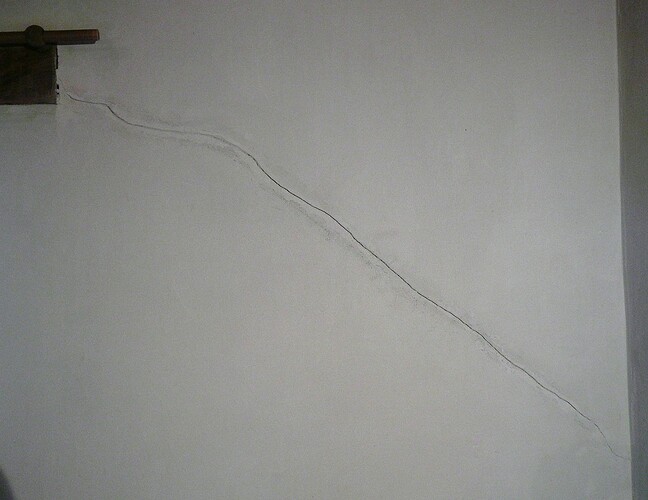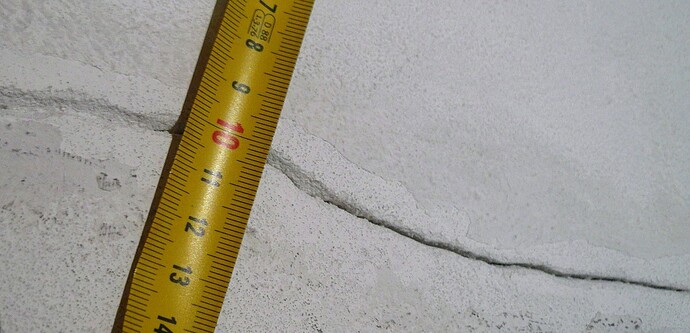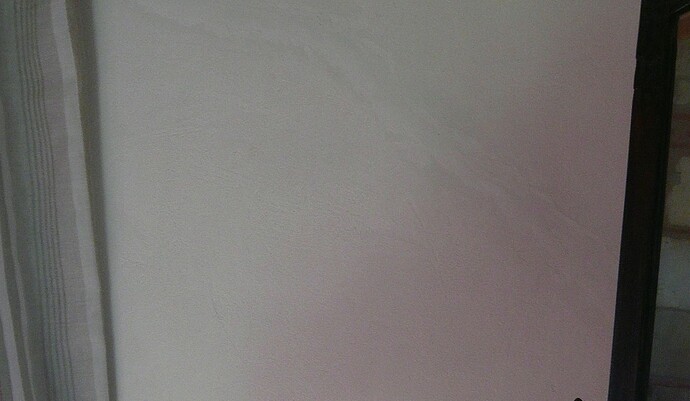I’d be grateful for some help please. Our cottage/gite has a diagonal crack through the lime render in one bedroom wall. It’s been there some time and I bodged it last year (don’t ask) but now want to do it properly. The crack is about 1.3m long. It’s quite narrow and not widening - about 1-2mm, so I’ve been using a small chisel to widen it a bit up to about 3-4mm.
I’ve got some chaux en pâte and wondered if I can use it (mixed with?). Thanks for any suggestions / thoughts.
Fine plastering sand and lime unless the is a pre packaged mix of the same available
No matter what you use (I’ve used mortier colle before, as well as lime putty), you will likely still see where you’ve repaired, very difficult to replicate the surface texture. Use a small flexible filling knife and just go for it
Do you add anything to the lime putty Mark?
Before you applying the above mentioned.
Cut a line 2cms from each side of the crack with a Stanley knife or something similar, route out or using a plaster rasp out a few mm in between the cut lines, apply a thin layer of the lime plaster mix in the
furrow / indentation you’ve created, this is to help a dire and apply scrim tape, once the scrim tape is in place plaster over it in th a finish. If you don’t apply scrim tape the crack will reform.
Scrim tape = calicot in French.
Edit refer to @Corona post for materials
@Mark replied just before me
Forgot to mention if planning to paint the wall (recommend as you’ll see the repair) you can use enduit reboucher instead.
No, just the crack. Annie Sloan Old White exactly matches the surrounding wall, so I will just do along the crack. ![]()
Isn’t that chalk paint if so reboucher will be fine, light coat over the filler or lime plaster, let dry then paint the whole wall be careful cutting in the corners
No, slap it in and sand down when set, but not too set. Not sure what the substrate is (probably not placo and its not moving) so putting scrim tape over the crack might not make any difference, apart from creating a lot of mess.
I disagree there Mark, there’s been slight movement and caused the cracks, that slight movement can still exist, Scrim tape was well in use before plaster board.
And if anyone makes a mess of it…. ![]()
Thanks @Mark and @Wozza - when I said I wanted to do it “properly” - I’m still a “slap it in” type DIYer and sorry @Wozza, no way am I spending time painting. I’ve got too much going on in ,my life right now.
The cottage is 19th century, no foundations and was open to the sky with no first floor. The bedroom wall is above the kitchen wall and the sink just had a hole through to the outside, so the earth had eroded away. The builders poured concrete into the ground to stabilise it, then put a ceinture round between the ground and first floor and another between the first floor ceiling and the roof to hold it all together. No doubt there’s been some movement (the walls are 50cm thick and a lot of it’s rubble) but it’s not as bad as I feared when the crack first started. I’ll try again, just with the lime pate. The cottage is not posh, and the walls are rough and have marks and different shades of white - if the work on the crack shows that really won’t be an issue. I’ll post an “after” picture. ![]()
I realise that but my thinking is that while scrim tape can help reduce cracking on placo joints, it’s unlikely to help on anything else (in my experience)
Many moons ago I was a professional painter and decorator, high gloss walls and ceilings to mirror finish, faux marble, bois, gilding etc, preparing different substrates that’s most if not 80% of the work.
One of my claims to fame is decorating one of the Queens bedrooms, she must have thought the world smells of fresh paints and wall coverings ![]()
If you have walls and ceilings with multiple hair line cracking you can use fine fiberglass sheeting which come in rolls called voile de verre in French
One of my claims to fame is decorating one of the Queens bedrooms,
Wow, my modest gite bedroom is nothing like that - just lime render with lime wash - no paint, no wallpaper. But your suggestion to cut back the render from the crack got me investigating the state of the wall. The render is rock solid, so I decided to enlarge the crack slightly so I could get the lime putty well into it. It seems to have gone in well and I’ve used Annie Sloan’s chalk paint. Yes, you can see the repair but the wall is alongside the window, so it’s the darkest wall. There’s a curtain and a mirror to distract. And it’s a lot better than it was. For you Wozza, I suspect it’s a botched job, but “Man on a galloping horse …” ![]()
If it falls out next winter you can say “I told you so!”
Congratulations Sue,
You’ve added a new architectural feature to the room, looks like it’s been there for years & giving more caractère, old houses should be full of them. ![]()
Good job @SuePJ
I’m only here for the Craic…


